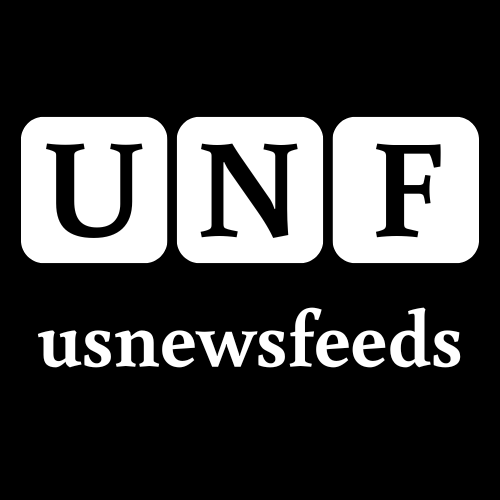What Is a URL?
A uniform useful resource locator (URL) is the handle of a selected webpage or file (reminiscent of video, picture, GIF, and so on.) on the web.
It is what you kind into your browser’s handle bar to entry a web-based useful resource.
How Do URLs Work?
Right here’s a fast breakdown of how URLs work:
Once you kind a URL into your browser’s handle bar, you are giving your browser particular directions on the place to go on the web.
As soon as it is aware of that, the browser sends a request to an online server at that handle. This server is a robust laptop that shops the webpage or file you are making an attempt to entry.
As soon as the server processes your request, it sends again the requested useful resource (webpage, picture, video, and so on.).
Your browser then shows the contents of that useful resource on the display.
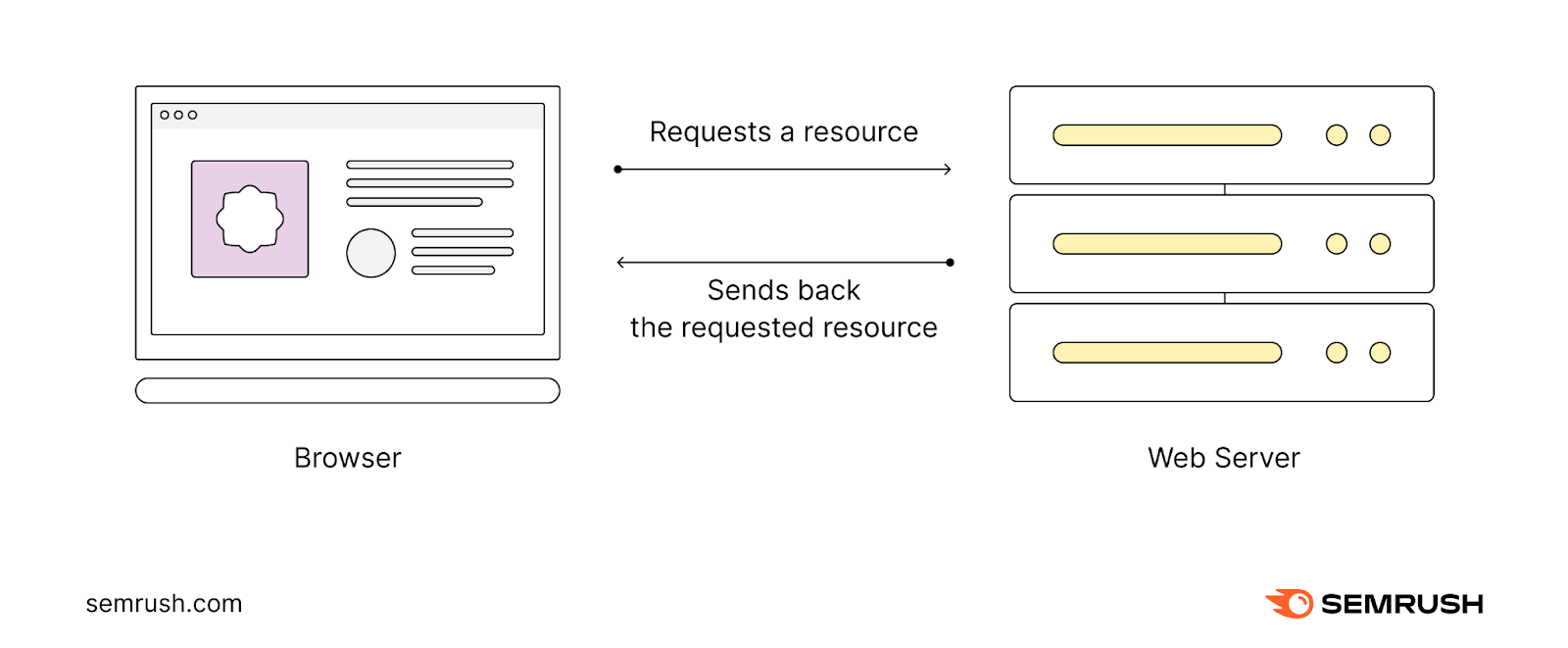
This interplay between your browser, the URL, and the net server is the elemental course of that powers the web as we all know it.
Why Are URLs Essential?
A URL factors your browser to the precise spot—be it a webpage or file—that you just need to view.
This issues as a result of there are billions of assets throughout greater than a billion web sites.
URLs uniquely establish each, out of your homepage to your canine’s Instagram account. And get you the place you need to go.
This profit is on the consumer’s facet.
On the web site developer’s facet, URLs are equally essential.
Builders use URLs when dealing with a web site’s hypertext markup language (HTML).
They use URLs to create hyperlinks between totally different pages utilizing the anchor element (additionally known as an <a> tag). This allows you to join webpages and permits customers to navigate between them.
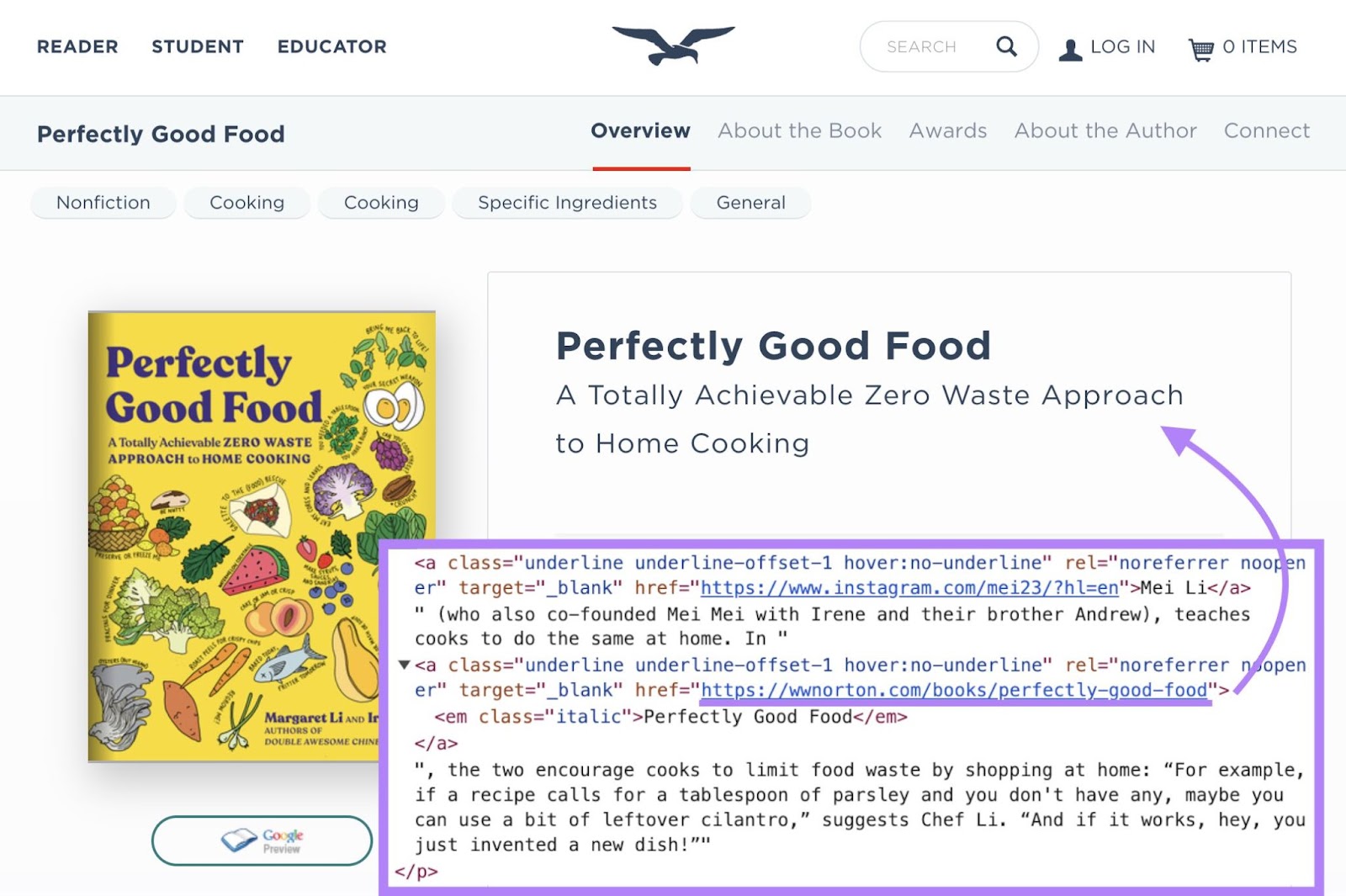
What’s extra, URLs additionally enable separating code into distinct information that may be linked collectively.
So all of your cascading model sheet (CSS) information, JavaScript information, and different property might be organized cleanly. The HTML simply must reference these URLs to drag every little thing collectively for the ultimate webpage.
Now, let’s perceive how URLs are structured.
What Are the Completely different Components in URL Construction?
The construction of a URL breaks down into 5 distinct elements. Like this:
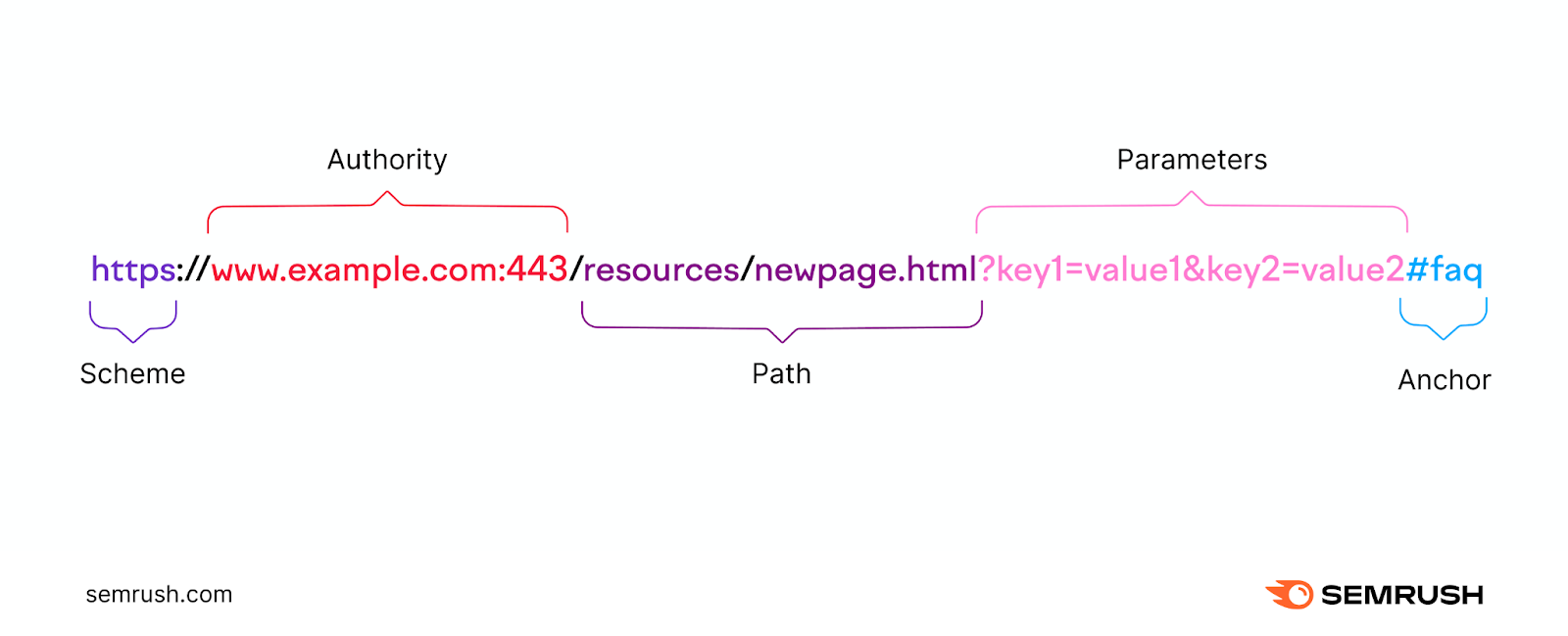
Scheme
The scheme is the primary a part of the URL. It signifies the protocol for accessing the useful resource.

A protocol is a algorithm for a way a connection between a browser and an online server needs to be established.
Frequent schemes you would possibly acknowledge are:
HTTP
Hypertext switch protocol (HTTP) is a typical protocol for establishing a connection between a browser and an online server.
Once you enter a URL with the “http” prefix, your browser sends a request to the server to retrieve the useful resource specified within the URL.
The server then responds by sending again the requested useful resource if it’s accessible.
However this connection isn’t safe. Which implies anybody can intercept and browse the information.
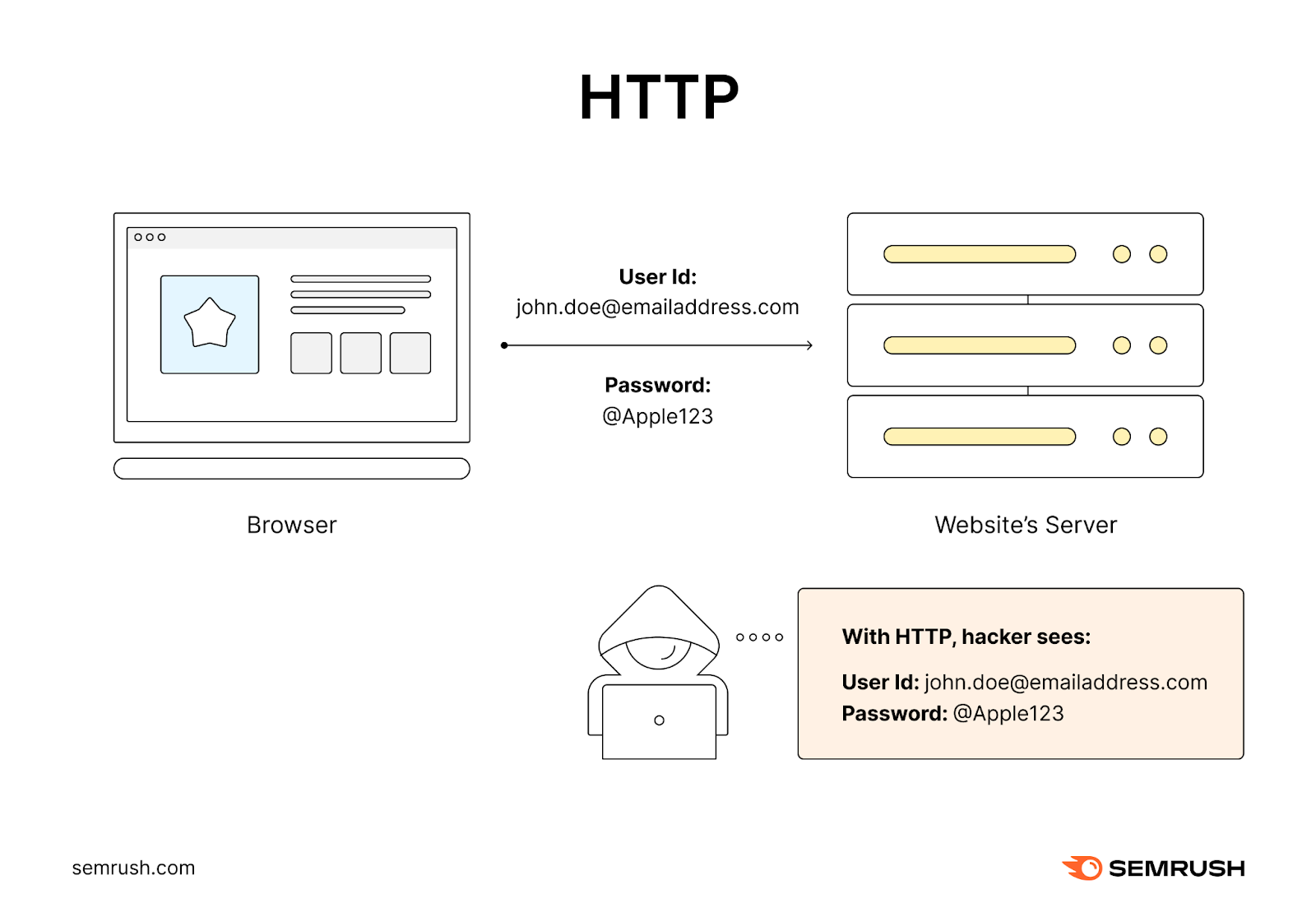
This creates a critical safety loophole. That’s why web sites (and search engines like google) want hypertext switch protocol safe (HTTPS) nowadays.
HTTPS
That is HTTP’s safer sibling. That provides an encryption layer to your net session.
Which means any data transferred between your browser and the server is encrypted and far more durable for outsiders to intercept.
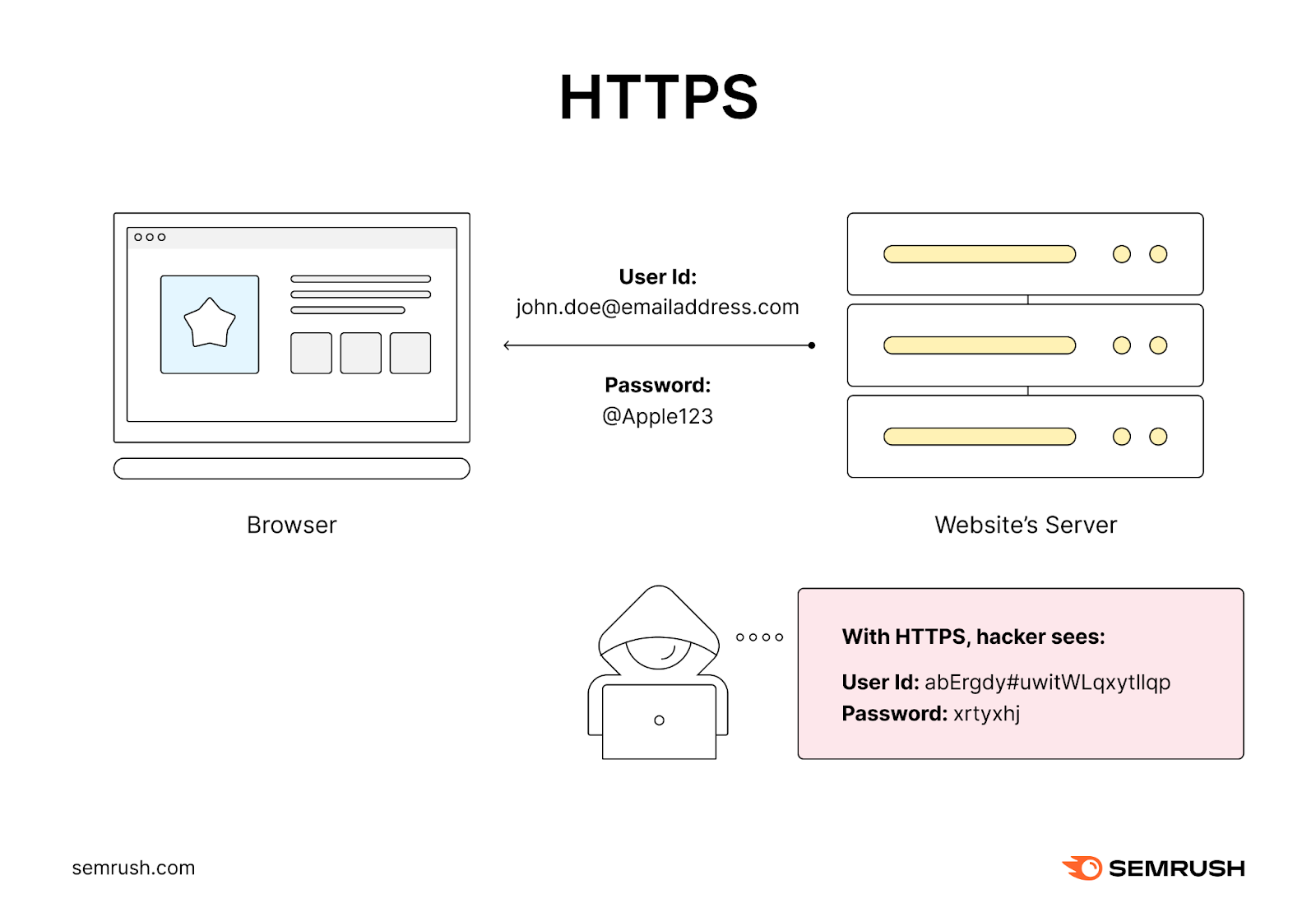
Moreover HTTPS, browsers can even deal with different schemes like file switch protocol (FTP) and mailto.
Additional studying: HTTP vs. HTTPS: Differences, Benefits, and Migration Tips
FTP & Mailto
FTP is used for transferring information between a browser and an online server.
Once you enter a URL beginning with “ftp,” it initiates a connection to your FTP server.
Then, you’ll be able to handle your web site information. Which means you’ll be able to obtain or add any information you need.
In contrast to HTTP and HTTPS, FTP is targeted solely on the switch of information. Not rendering webpages. And a typical FTP URL seems to be one thing like this:
ftp://ftp.host.com/
The mailto scheme is used to create a hyperlink that opens the consumer’s e mail consumer (Outlook, Gmail, and so on.) to ship an e mail.
Once you click on on a hyperlink with this prefix, it mechanically opens your default e mail consumer and pre-populates the recipient’s e mail handle to what was specified within the URL.
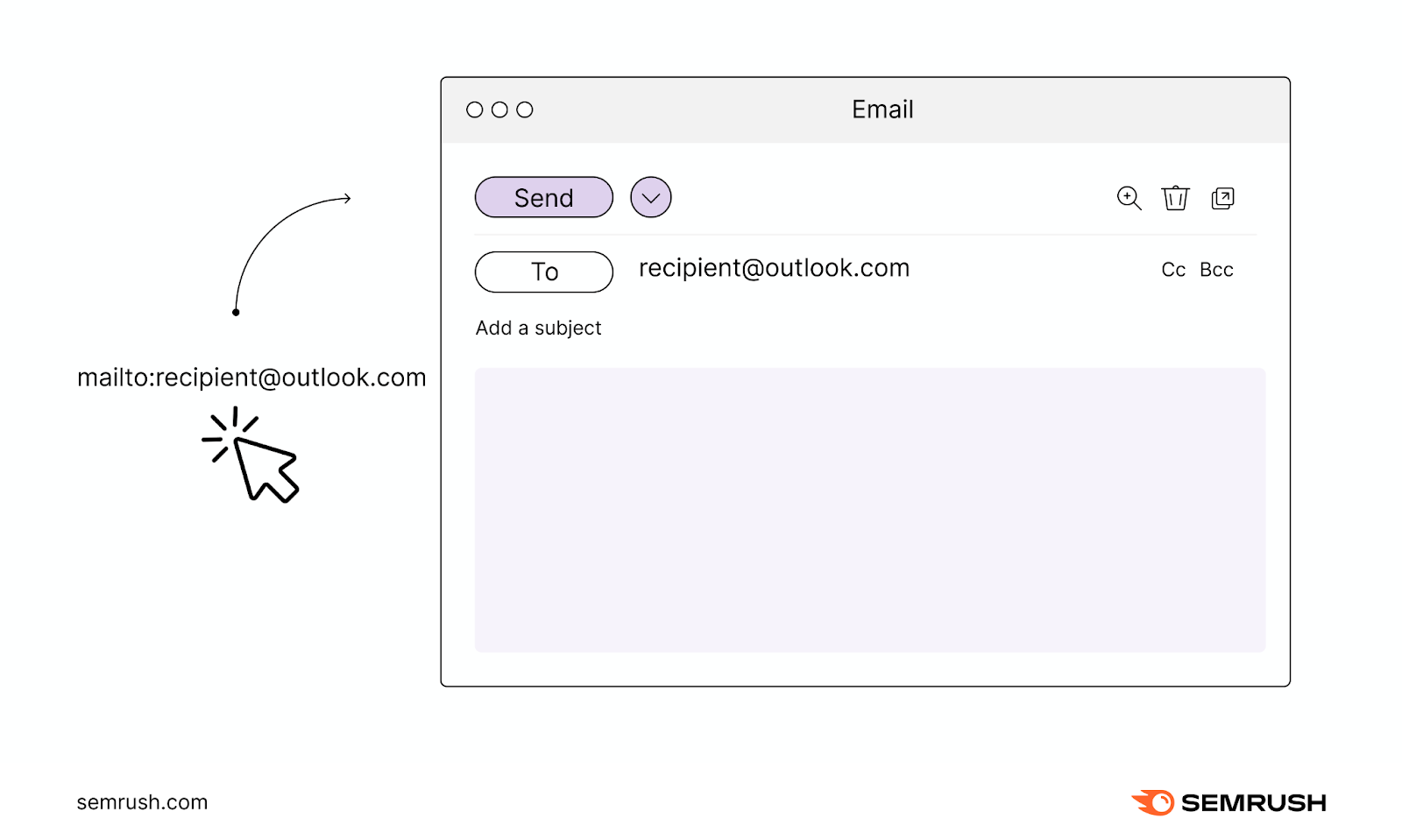
That is handy for letting customers shortly ship emails to contacts listed on web sites with out having to repeat and paste their e mail addresses.
Whereas not as generally used as HTTP or HTTPS, each FTP and mailto play necessary roles in particular contexts.
Authority
The authority is the second a part of a URL that comes after the “://” character sample.

It tells your browser the place to search out the location and who it belongs to.
This a part of the URL consists of 4 essential elements:
Subdomain
A subdomain is a string of letters or a whole phrase that seems earlier than a URL’s first dot.

The most well-liked subdomain is www. It stands for world vast net, speaking that the URL is an online handle.
Up to now, it was widespread to make use of www. However you’ll be able to omit it out of your URLs if you need.
It doesn’t matter whether or not you employ it. All of it relies on your private choice.
Area
A site is the title of a web site. Like eBay, Expedia, or Semrush.

It’s an easy-to-remember a part of the URL.
Every area is exclusive. So everytime you kind it in, you reference a selected web site you plan to go to.
High-Degree Area and Nation-Code High-Degree Area
The highest-level area (TLD)—additionally known as area extension—is the half that comes after the title of your web site. Like “.com.”

You’ll come throughout many TLDs on the web. Right here’s a listing of 5 of the most typical ones and which sorts of internet sites use them:
- .com: Business web sites
- .org: Nonprofit organizations
- .internet: Software program and internet hosting firms offering community companies
- .edu: Instructional establishments (universities, schools, colleges, and so on.)
- .gov: Authorities businesses and departments
Moreover, there are country-code top-level domains (ccTLDs).
ccTLDs are two-letter area extensions that point out a web site’s affiliation with a selected nation or territory.
Examples embody:
- .uk for United Kingdom
- .de for Germany
- .cn for China
- .ca for Canada
- .in for India
- .es for Spain
- .au for Australia
- .nz for New Zealand
Web sites use ccTLDs when their audience is predominantly based mostly in a selected nation.
Through the use of ccTLD, a web site indicators its connection to that location. Which may also help to determine belief and credibility with customers in that area.
Port
A port is the numerical identifier that specifies a selected gateway for guiding visitors to your net server.

It’s like a door folks move by to go to your website.
More often than not, you do not see port numbers in URLs as a result of they’re utilizing normal ports. Which browsers assume by default (e.g., port 80 for HTTP and port 443 for HTTPS).
Path
The following a part of the URL is the trail. And it signifies the precise instructions to the web page (or useful resource) being requested on a website.

It’s like the precise route you’re taking to a room in a big constructing (the area).
Usually, the trail is made up of two elements:
Subfolder
A subfolder (additionally known as a subdirectory) is a folder or listing positioned in the primary listing that homes the web page a consumer has requested.

Subfolders enable web sites to arrange associated pages collectively inside the area’s total listing construction.
Like this:
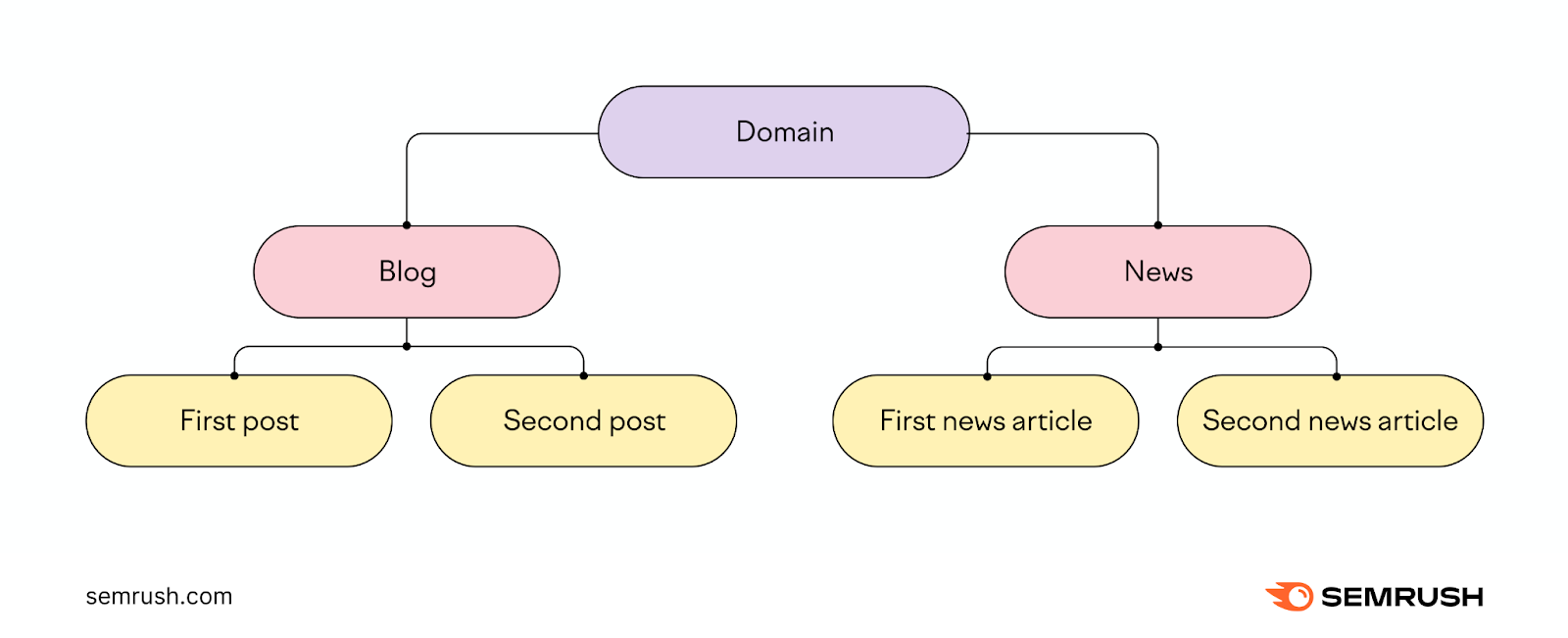
Right here, “weblog” and “information” are subfolders inside the primary area that each arrange associated content material.
URLs for these 4 pages would look one thing like this:
- https://www.instance.com/weblog/first-post
- https://www.instance.com/weblog/second-post
- https://www.instance.com/information/first-news-article
- https://www.instance.com/information/second-news-article
Slug
A slug is the final section of the trail that identifies a selected web page. Typically, in a human-readable format.

It helps customers perceive the place precisely they’re on the web site.
Parameters
Parameters (or question strings) are an optionally available a part of a URL that comes after a query mark (?).

They modify the contents of a web page based mostly on the key and worth specified.
The bottom line is like a label that claims what to alter. The worth specifies the precise modification standards.
Let’s use the instance URL beneath to know this higher.

On this instance, “class” is the important thing and “health” is the worth. This parameter will apply a filter to a webpage to show solely fitness-related weblog articles.
You possibly can add a number of parameters to a URL by separating them with an ampersand (&).

Now, there are two parameters: “class” with the worth “health” and “type” with the worth “latest.”
This is applicable a filter to a webpage to point out weblog posts about health. And shows them from latest to oldest.
For extra details about parameters and the way to use them in your web site, learn our full information to URL parameters.
Anchor
An anchor (additionally known as a fraction identifier) is the optionally available final a part of the URL that takes customers to a selected part inside a webpage.
It comes after the quantity (#) image.

Within the instance above, the browser will immediately scroll to the FAQ part of the webpage quite than opening the webpage on the prime.
However anchors aren’t simply restricted to textual content content material.
For a video or audio file, the browser will leap on to the time specified within the anchor.
For instance, a URL like https://www.instance.com/video#t=2m30s will direct the browser to start out the video immediately on the two-minute and 30-second mark.
What Are Some URL Examples?
Now that the elements URLs can embody, let’s see how combining them can create a variety of URLs:
http://area.com/
ftp://ftp.area.com/downloads/software program/setup.exe
https://www.area.com/information/new-ai-tool
http://www.area.com/assets.html
mailto:assist@area.com
https://area.com/merchandise/t-shirt/males?coloration=black&model=nike
https://area.com/assortment#newlylaunched
All these URL codecs are legitimate. They level to distinct assets.
And a few of them even serve distinctive features. Like file administration with the FTP protocol and e mail communication with the mailto protocol.
What Are the Essential Varieties Of URLs?
URLs might be categorized into differing types based mostly on their construction and goal. Listed here are some widespread varieties:
Absolute URLs
An absolute URL gives the entire net handle to a useful resource, together with the protocol (like HTTP or HTTPS), area title, path, and probably different elements like parameters and anchors.
Absolute URLs are generally used when linking from one web site to a different. And when sharing hyperlinks on-line.
Listed here are some examples of absolute URLs:
https://www.area.com/part/science
https://area.com/wiki/sleep
https://area.com/merchandise/
Relative URLs
A relative URL solely specifies the trail. Which means the listing and the slug.
One use case for relative URLs is to hyperlink between pages inside the similar web site to create internal links.
This avoids repeating the bottom area and protocol in each inner hyperlink.
Listed here are some examples of relative URLs:
paperwork/report.pdf
archives/article123
weblog/what-is-internet
URLs are additionally categorized based mostly on the precise goal they serve. So, let’s have a look at all these URLs now.
Canonical URLs
A canonical URL is the first URL for a set of duplicate URLs in your website.

Duplicate URLs are pages that basically have the identical content material.
For instance, the identical content material could possibly be accessible on:
- https://www.instance.com/merchandise
- https://www.instance.com/merchandise/
- https://www.instance.com/all-products
The canonical URL could be outlined as a kind of choices. Let’s say it’s https://www.instance.com/merchandise.
Specifying a canonical URL helps search engines like google work out which URL to index (retailer in its database) and present in search outcomes. (Engines like google wouldn’t intuitively know this if duplicate content material exists on totally different URLs.)
Callback URLs
A callback URL is the web page customers are mechanically redirected to once they full a selected motion or process.
For instance, when a consumer logs in to a web site utilizing a third-party authentication service like Google, the web page they’re redirected to after efficiently authenticating with Google is the callback URL.
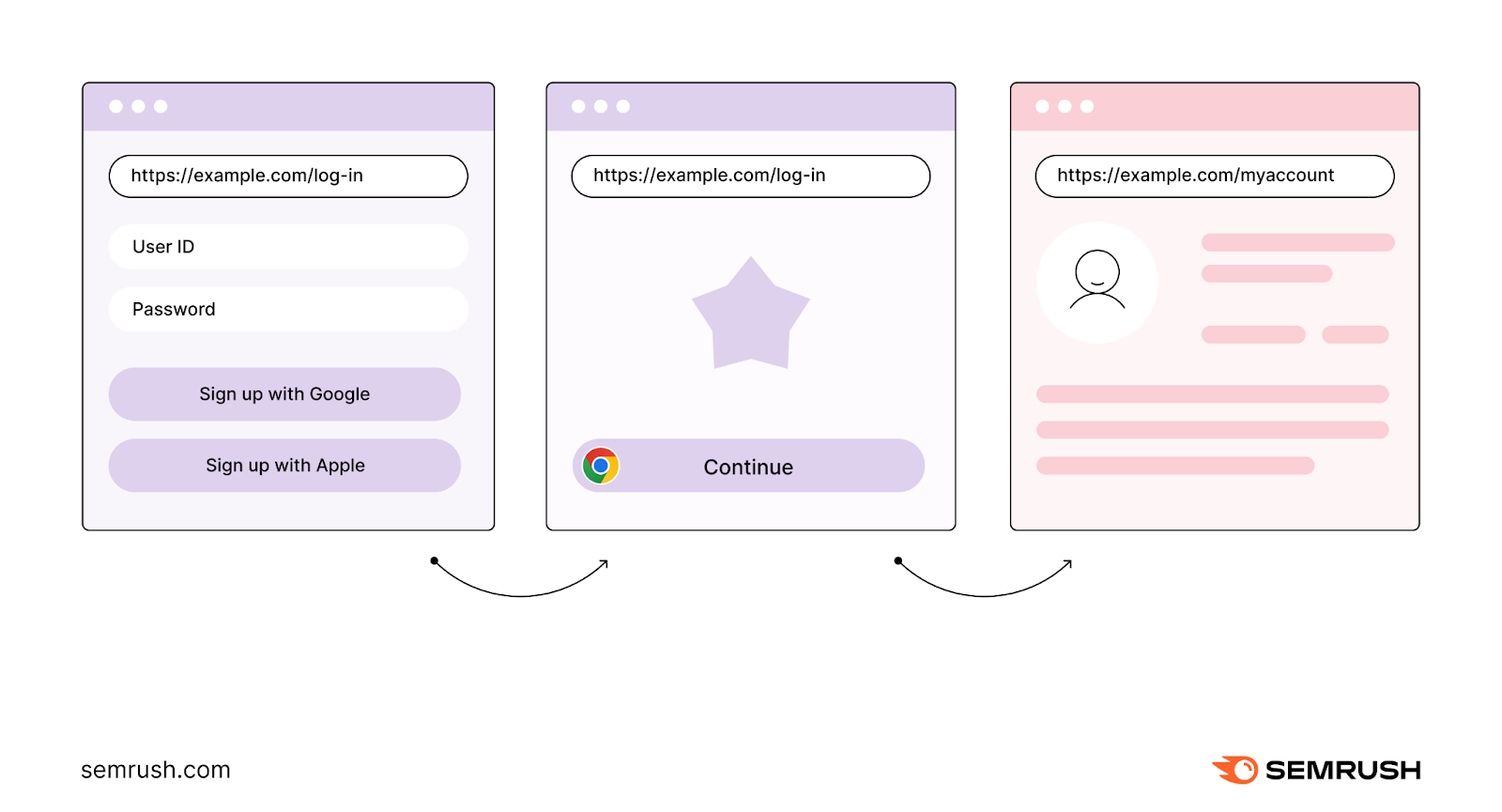
Self-importance URLs
An arrogance URL is a customized URL that’s brief and straightforward to share in comparison with the URLs you usually see.
Self-importance URLs are utilized in advertising and marketing campaigns or on social media to advertise a selected webpage in your website.
You should utilize URL shortener instruments like Bitly, TinyURL, and Short.io to create them.
Right here’re some examples of self-importance URLs:
area.com/sale
area.io/BestDealsNow
area.com/low cost
area.org/charity
How one can Use URLs
URLs are highly effective instruments. And you need to use them successfully in the event you perceive their position in several contexts, like net browsers, HTML, and different applied sciences.
Browser
Utilizing URLs in an online browser is the most typical method folks work together with them. Right here’s how:
- Getting into URLs: Merely kind the URL into the handle bar of your browser and press the “Enter” or “Return” key. The browser will then navigate to the required webpage or useful resource.
- Bookmarks: It can save you URLs as bookmarks in your browser for straightforward entry sooner or later
- Shopping historical past: Browsers hold a historical past of the URLs you have visited, permitting you to simply return to beforehand seen pages
HTML
In HTML, URLs are used for:
- Hyperlinks: URLs are utilized in anchor (<a>) tags to create hyperlinks. These hyperlinks enable customers to click on and navigate to different webpages or assets.
- Embedding assets: URLs are used to embed photos, movies, and different assets into webpages. As an illustration, a picture (<img>) tag may need a supply (src) attribute that comprises a URL pointing to a picture file.
- Linking CSS and JavaScript: URLs are used to hyperlink exterior CSS information and JavaScript information to HTML paperwork, enabling you to separate of content material, model, and performance
Different Applied sciences
URLs additionally play a important position in numerous different applied sciences. Listed here are just a few widespread makes use of:
- Social media: URLs are used to share net content material on social media platforms. Once you publish a URL, many social media websites can fetch and show a preview of the content material.
- QR codes: QR codes can encode URLs. When scanned with a smartphone, they direct the consumer to a webpage, typically for advertising and marketing or informational functions.
- E-mail: URLs are sometimes included in emails to direct recipients to webpages for promotional functions, consumer verification (like e mail affirmation hyperlinks), to supply additional studying, and so on.
How one can Optimize URLs for web optimization
If you need your web site URLs to point out up in search outcomes and produce visitors to your website, it’s worthwhile to concentrate on search engine optimization (web optimization)
web optimization entails optimizing totally different elements of your web site (together with your URLs) to rank larger in search engines like google’ natural (unpaid) search outcomes. Which seem alongside paid outcomes.
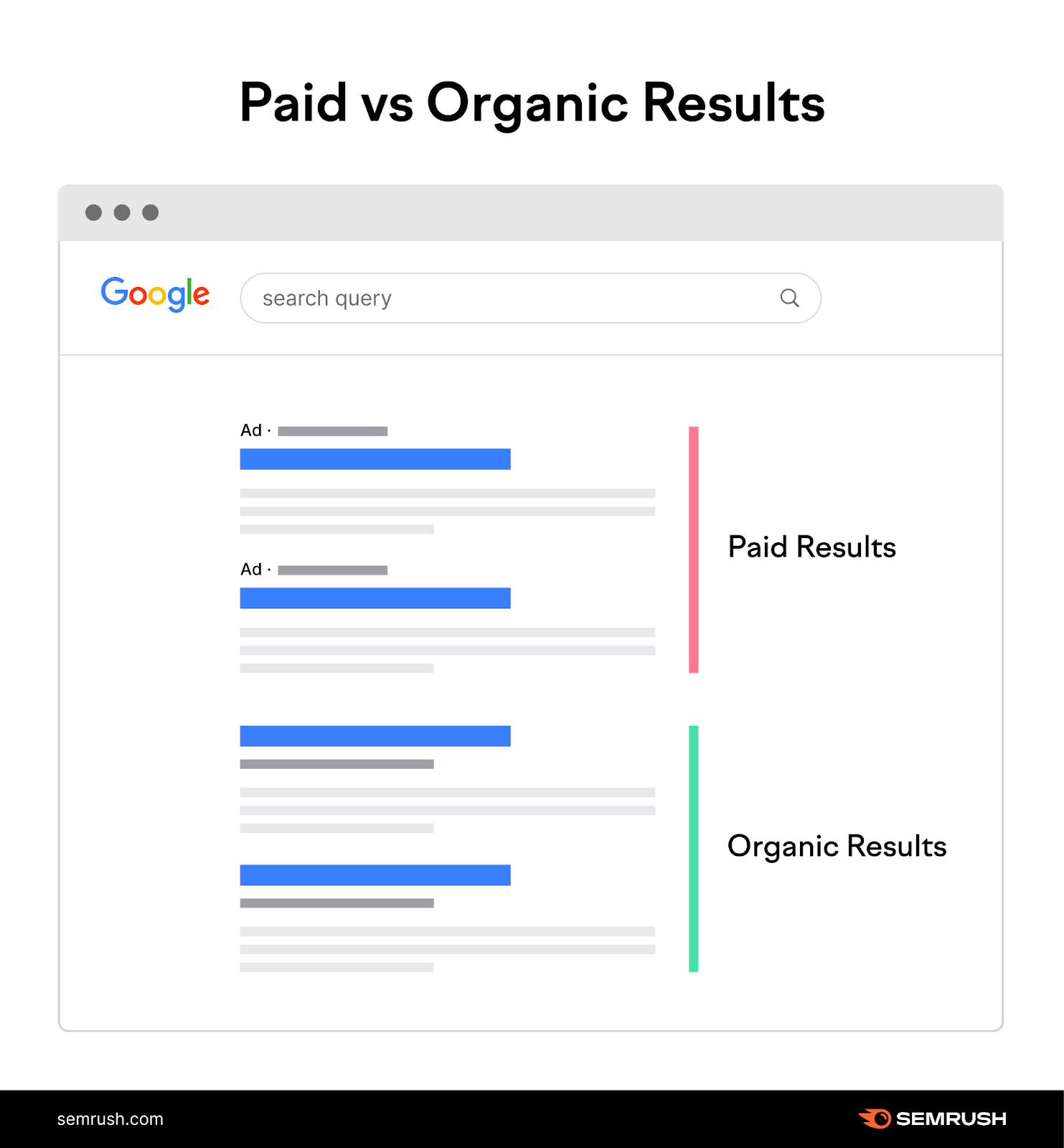
Listed here are some tips about the way to optimize the construction of your URLs.
1. Use the HTTPS Protocol
Since HTTPS is safer, search engines like google like Google use it as a light-weight rating sign.
So in case your web site makes use of HTTPS, you have got a slight rating benefit over those that don’t use it.
2. Select an Acceptable TLD
For probably the most half, TLDs don’t immediately affect your rankings.
However you need to use the one which aligns with your enterprise. For nonprofit organizations, .org is greatest.
For academic establishments, reminiscent of universities, schools, and colleges, .edu is probably the most acceptable TLD.
For industrial web sites, .com is the way in which to go.
Should you solely do enterprise outdoors the U.S., your ccTLD( like .au for Australia and .nz for New Zealand) can be high quality.
However keep away from utilizing TLDs like .information and .biz—folks are likely to affiliate these with spam. So that you may need a tough time constructing high-quality backlinks to your website. That are necessary to enhance rankings.
3. Use Subfolders to Manage Your Content material
Use subfolders that logically arrange your content material and make it straightforward for customers to know the place they’re on the web site.
Which the American Lung Affiliation has carried out:
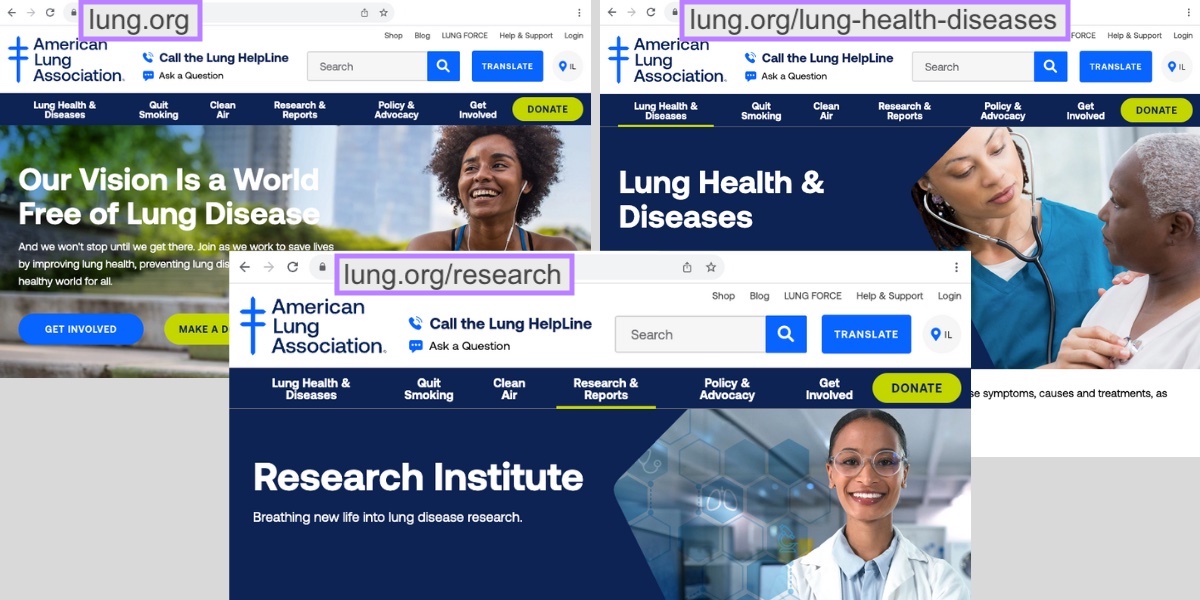
That is necessary from a consumer expertise (UX) viewpoint. Which is intently linked to web optimization.
Your subfolders ought to point out the kind of content material discovered at that URL. To assist search engines like google perceive your content material higher.
- Good subfolder: https://web site.com/weblog/best-travel-tips/
- Unhealthy subfolder: https://web site.com/folder1/best-travel-tips/
Should you personal a extremely massive web site—an ecommerce website, for instance—it’d get tough to arrange all of your pages utilizing just one stage of subfolder.
In that case, use sub-subfolders to additional outline your web site hierarchy.
Right here’s an instance of how you may have a subfolder inside one other subfolder in your website:
https://retailer.com/males/tshirt/tommy-hilfiger/
4. Optimize Your URL Slugs
It’s essential to do 4 issues to optimize your URL slugs for web optimization.
Be Descriptive
Your URL slug ought to describe the web page’s content material as a result of it helps the search engine perceive what the web page is about. And rank it appropriately.
Good URL slug: /best-baby-soaps/
Unhealthy URL slug: /page1234/
One of the best ways to make your URL slugs descriptive is to make use of the web page’s goal key phrase (the key phrase you need to rank for in search outcomes).
Should you don’t know what your goal key phrase is or the way to discover one, learn our information to keyword research.
Make It Brief
Lengthy URLs are more durable for customers to learn. And search engines like google like Google typically truncate lengthy URLs in search outcomes.
Like this:

So, attempt to hold your slugs to 5 phrases or fewer.
- Good URL slug: /home-workout-tips/
- Unhealthy URL slug: /the-7-best-home-workout-tips-the-ultimate-cheatsheet-for-training-without-a-gym/
Use Hyphens to Separate Phrases
Use hyphens to separate phrases in your URL slug as an alternative of underscores. They’re the usual method of separating phrases in a URL.
- Good URL slug: /free-marketing-tools/
- Unhealthy URL slug: /free_marketing_tools/
Use Lowercase Characters
URLs are case-sensitive. And if in case you have a selected URL in each lowercase and uppercase, it may create duplicate content points in your website.
Plus, lowercase URLs make it simpler for customers to enter the URL appropriately.
- Good URL slug: /how-to-make-pizza/
- Unhealthy URL slug: /How-To-Make-Pizza/
Learn our full information to URL slugs for extra data.
Audit Your Current URLs to Establish Points
Should you’re a Semrush consumer, you need to use the Site Audit instrument to verify whether or not your URLs are arrange appropriately. And discover any points which might be current.
Create a project within the instrument and run a full crawl of your web site.
After the crawl is full, navigate to the “Points” tab and seek for “URL.”

The instrument reveals whether or not your web site has any URL-specific points like URLs being too lengthy. Or phrases in URLs which might be separated with underscores as an alternative of hyphens.
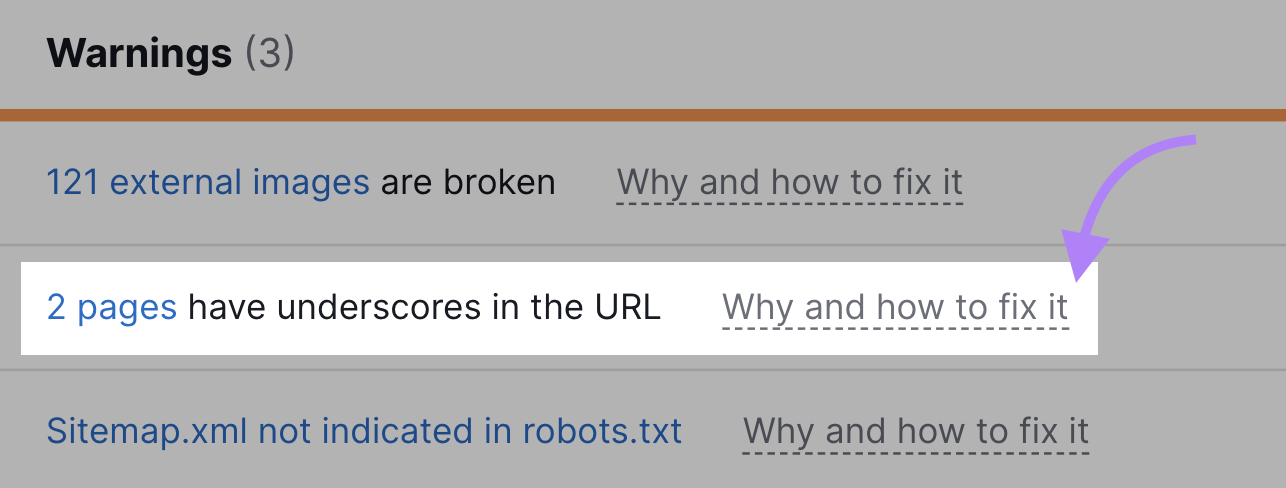
The instrument additionally gives recommendation on the way to repair every challenge.
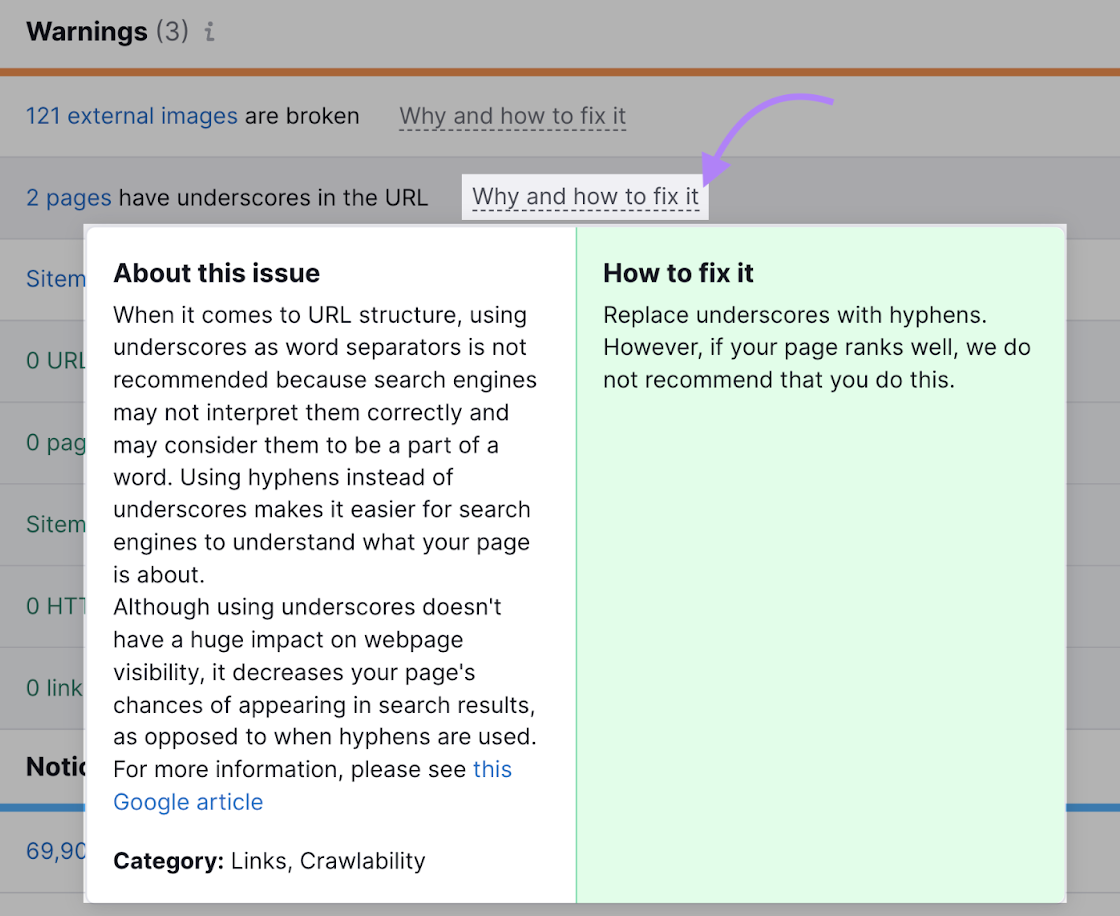
FAQs
To wrap issues up, let’s cowl some often requested questions on URLs.
1. What Does URL Stand For?
URL stands for uniform useful resource locator. It’s the net handle that specifies the situation of a useful resource on the web.
2. What’s the Distinction Between a URL and a URI?
A uniform useful resource identifier (URI) labels or identifies a useful resource however does not essentially inform you the way to retrieve it.
As an illustration, isbn:0261103303 identifies the e book with that ISBN quantity however does not point out the place or the way to get it.
A URL is a selected kind of URI that not solely identifies a useful resource, but additionally gives the technique of finding it.
For instance, https://www.example.com/page.html is a URL that tells you the useful resource is the webpage positioned on instance.com’s server at /web page.html. And makes use of the HTTPS protocol to entry it.
That’s the primary distinction.
URLs all the time level to assets—URIs simply title them.
3. Is a URL an IP Deal with?
A URL is just not the identical factor as an IP handle, which solely identifies the area title.
URLs embody extra data like protocols and file paths past simply specifying the situation (area title).
A number of URLs can level to the identical IP handle. However every IP handle can solely establish one area.
4. Are URLs Case Delicate?
The area title portion of a URL is case insensitive, in accordance with Domain Name System (DNS) standards.
The case sensitivity of different elements (path, parameters, anchor, and so on.) relies on your net server’s configuration.
To be constant, deal with URLs as case delicate even when your server permits for combined instances. And go along with lowercase capitalization for all elements of URLs. Because it’s the usual method of making URLs.
